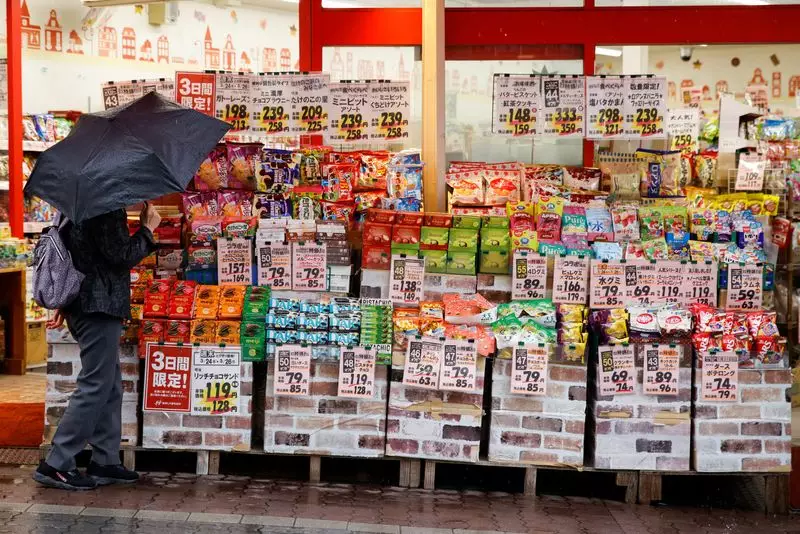Recent data out of Japan has revealed a nuanced picture of the nation’s economic health, presenting both optimism and concern for policymakers. December saw a noticeable uptick in core inflation within Tokyo, which is often viewed as a bellwether for national trends, fuelling market speculation about potential interest rate hikes by the Bank of Japan (BOJ). However, this encouraging inflation news comes alongside a troubling decline in factory output, indicating that the export-driven economy may be facing headwinds from waning international demand.
Core inflation in the Tokyo region rose 2.4% year-on-year in December, slightly below analysts’ predictions of a 2.5% increase but a step up from November’s 2.2% increase. The figures, particularly for core consumer price index (CPI), remain pivotal as they exclude volatile fresh food and fuel costs, highlighting the potential for more stable price movements that the BOJ actively seeks to monitor. Another closely watched index, removing both fresh food and fuel, notably rose 1.8% in December, showcasing an ongoing, if modest, inflationary trend.
Service-sector prices, which climbed 1.0% in December from the previous month, shed light on the pressures exerted by escalating wages. Analysts suggest that firms may be inclined to raise service prices as they continue to experience pressure from higher labor costs. Observations from economists such as Masato Koike underscore the view that sustained wage growth may finally be fostering a climate where businesses can afford to increase service pricing. This dynamic could satisfy the BOJ’s long-standing ambition of achieving a sustained inflation rate around its 2% target, effectively normalizing monetary policy in response.
However, this increase in inflation is primarily driven by rising utility fees and food prices, particularly staples like rice. Such pressures could have adverse effects on consumer spending, which remains critical for sustained economic growth. Economists argue that while inflation targeting may appear rosy on the surface, there are underlying vulnerabilities in consumer sentiment and purchasing capacity that cannot be ignored.
Contrasting sharply with inflationary trends, Japan’s manufacturing output saw a significant drop of 2.3% in November, indicating the first decline in three months. This downturn can largely be attributed to reduced production in sectors critical to Japan’s export-led economy, particularly the semiconductor and automotive industries. These sectors have historically been the backbone of Japan’s economic recovery but are now showing signs of strain due to diminishing global demand.
The reduction in factory output raises pressing questions about the durability of Japan’s economic revival. Analysts are urging caution, emphasizing that inflation figures may not reflect genuine economic strength when consumption remains vulnerable. To illustrate this, economist Toru Suehiro from Daiwa Securities noted that excluding the impact of rising utility bills reveals a less impressive inflation picture, suggesting a more precarious economic foundation.
Adding further intrigue to the economic debate is the upcoming BOJ policy meeting scheduled for January 23-24. Following a sequence of adjustments leading to the termination of negative interest rates and an increase to 0.25% in July, market analysts are split on what the BOJ will decide next. The prevailing sentiment, as indicated by a recent Reuters poll, suggests a collective expectation of a potential rate increase to 0.5% by March. Yet, factors such as continued uncertainty over wage growth and international economic conditions weigh on decision-making processes.
BOJ Governor Kazuo Ueda has shown a preference for a data-driven approach, indicating that he is seeking clarity on both domestic wage trends and broader geopolitical economic policies, such as those transitioning with the new U.S. administration. The cautious stance taken at the last meeting has intensified scrutiny around the BOJ’s next move, as financial markets are eager for signals that might indicate the next steps in Japan’s complex monetary landscape.
Japan finds itself at a crossroads, navigating a delicate balance between encouraging inflation, sustaining consumer spending, and fostering a thriving manufacturing sector. The forthcoming BOJ meeting will play a critical role in shaping the monetary policy narrative in the context of rising costs and diminishing output. As the country strives toward a stable and vibrant economic future, the interplay between inflation metrics and manufacturing performance will remain crucial in assessing both current health and future growth trajectory.

